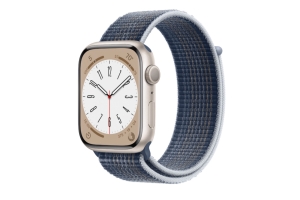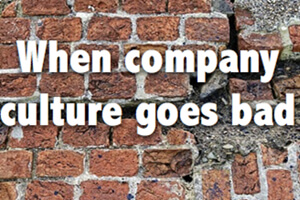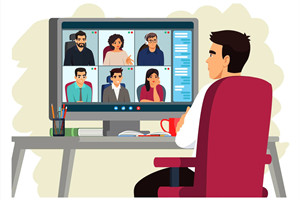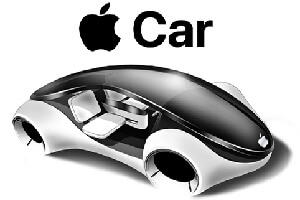Cubicles are out. Bars, neighbourhoods and sensors are in
The office used to be a place people went because they had to. Meetings happened in conference rooms and in person. Desks took up the bulk of the space. The kingdom of Dilbert and of David Brent is now under threat. The pandemic has exposed the office to competition from remote working, and brought up a host of questions about how it should be designed in the future.
Start with what the office is for. In the past, it was a place for employees to get their work done, whatever form that took. Now, other conceptions of its role jostle for attention. Some think of the office as the new offsite. Its purpose is to get people together in person so they can do the things that remote working makes harder: forging deeper relationships or collaborating in real time on specific projects. Others talk of the office as a destination, a place that has to make the idea of getting out of bed earlier, in order to mingle with people who may have COVID-19, seem attractive.
In other words, a layout that is largely devoted to people working at serried desks alongside the same colleagues each day all feels very 2019. With fewer people coming in and more emphasis on collaboration, fewer desks will be assigned to individuals. Instead, there will be more shared areas, or “neighbourhoods”, where people in a team can work together flexibly. (More hot-desking will also necessitate storage space for personal possessions: lockers may soon be back in your life.)
To bridge gaps between teams, one tactic is to set aside more of the office to showcase the work of each department, so that people who never encounter each other on Zoom can see examples of what their colleagues do. Another option is to ply everyone with drink. Expect more space to be set aside for socialising and events. Bars in offices are apparently going to be a thing. Robin Klehr Avia of Gensler, an architecture firm, says she is seeing lots of requests for places, like large auditoriums, where a company’s clients can have “experiences”.
Designs for the post-COVID office must also allow for hybrid work. Meetings have to work for virtual participants as well as for in-person contributors: cameras, screens and microphones will proliferate. Gensler’s New York offices feature mini-meeting rooms that have a monitor and a half-table jutting out from the wall below it, with seating for four or five people arranged to face the screen, not each other.
Variety will be another theme. People may plan to work in groups in the morning, but need to concentrate on something in the afternoon. Ryan Anderson of Herman Miller, a furniture firm, likens the difference between the pre- and post-pandemic office to that between a hotel and a home. Hotels are largely given over to rooms for individuals. “Home is thought of as a place for a family over years, hosting lots of different activities.”
All of which implies the need for flexibility. Laptop docking stations are simple additions, but other bits of office furniture are harder to overhaul. Desks themselves tend to be tethered to the floor through knotted bundles of cables and plugs. The office of the future may well feature desks with wheels, which ought to go well with all that extra alcohol. Meeting rooms are likely to be more flexible, too, with walls that lift and slide.
If socialising and flexibility are two of the themes of the post-pandemic office, a third is data. Property and HR managers alike will want more data in order to understand how facilities are being used, and on which days and times people are bunching in the office. Workers will demand more data on health risks: the quality of ventilation within meeting rooms, say, or proper contact-tracing if a colleague tests positive for the latest COVID-19 variant.
And data will flow more copiously in response: from sensors in desks and lighting but also from desk-booking tools and visitor-management apps. The question of who owns data on office occupants and what consent mechanisms are needed to gather this information is about to become more pressing.
Put this all together and what do you get? If you are an optimist, the office of the future will be a spacious, collaborative environment that makes the commute worth it. If you are a pessimist, it will be a building full of heavily surveilled drunkards. In reality, pragmatic considerations – how much time is left on the lease, the physical constraints of a building’s layout, uncertainty about the path of the pandemic – will determine the pace of change. Whatever happens, the office won’t be what it was.















